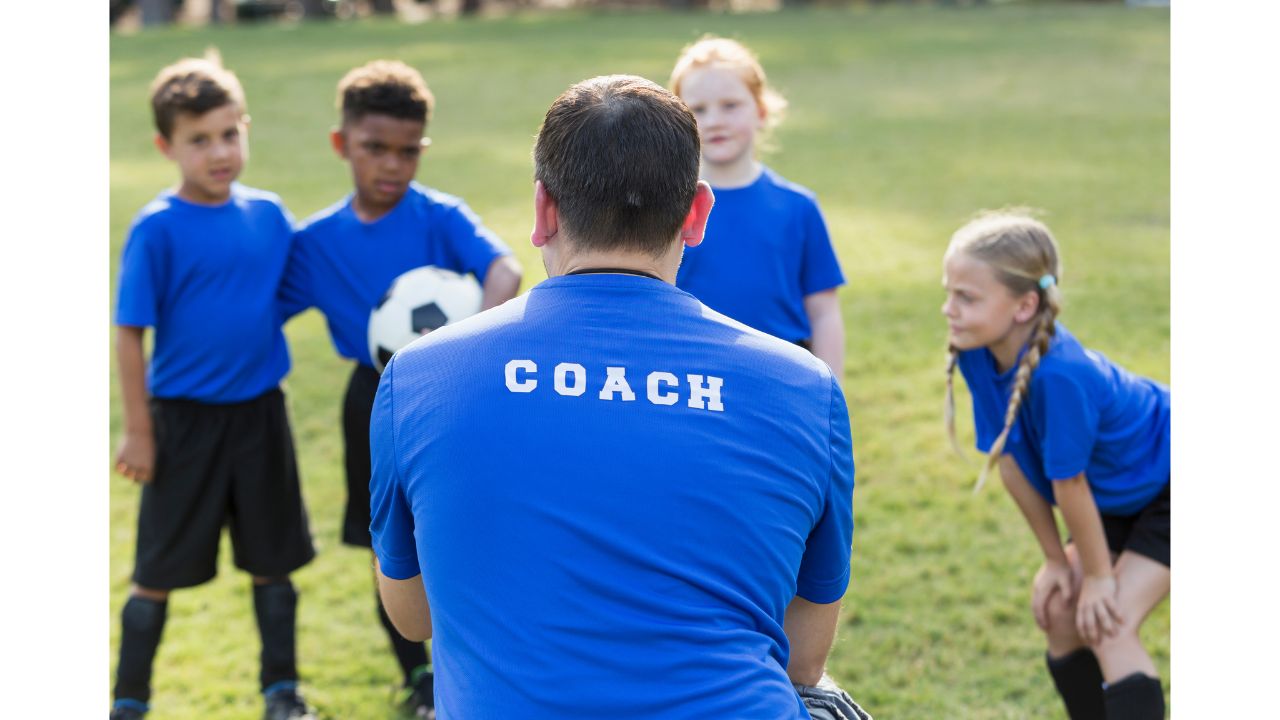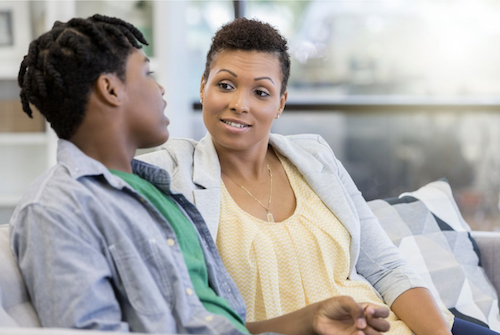I hope you are all adjusting to the unprecedented change in daily life that has come with the arrival of COVID-19. I’ve been brainstorming ways to support you the coming days.
For today, I’d like to share the top strategies that have emerged from my recent Clarity Calls with parents. Please email (amy@amybehrens.com) or call/text me with your challenges and questions as I plan to continue creating posts to offer responsive guidance. You spark my creativity with your inquiries, so keep them coming!
Take things one moment at a time
Many of us tend to catastrophize, especially when things feel uncertain, unpleasant, and scary. COVID-19 offers an upsetting blend of all three. To me, the best antidote to catastrophizing is to focus on the present moment and fully engage with that moment. One of the most effective ways to move from your mind into the present moment is by taking a few deep breaths in a conscious way. Focusing on the physical sensation of breathing moves you from mental whirling into the steady, rhythmic movement of your body.
Let’s say your kids are fighting and you are wondering how you can make it through one day, let alone two months of staying “sheltered in place.” You start thinking of potential awfulness and feel paralyzed. What can you do?
Pause, and notice what’s happening and decide to take 5 deep breaths, connecting with your body as each breath enters and exits.
Then ask yourself, “What needs to happen right now?”
Most irritating behavior signals an unmet need. After you have taken your five calming breaths, identify the needs at work in the situation. You might ask yourself, “What do my kids need right now?” “Do my kids need some alone time? Do they need some exercise? Do they need to go outside? Do they need to feel respected in the game they are playing?”
And then ask yourself, “What do I need?” “Do I need to release some physical energy? Do I need some quiet? Do I need to talk to another adult? Do I need a big hug?”
Once you are more clear on what is happening and what needs to happen, you can observe the facts in a non-judgmental way, address the feelings and needs going on, set the limit if necessary, and suggest a way to meet those needs. For example, “It sounds like you two are frustrated with how this game is going and could use a break. We don’t hit. Let’s all go outside and do some jumping jacks.” OR, “Looks like one of you wants to play and the other one wants to read. How about I play with you for a while instead? Then I need to start making lunch and you can be my sous chef.” OR simply, “Ok! Enough fussing. Mom/Dad needs a group hug right now!”
 The basic steps are:
The basic steps are:
- Regulate your own emotions and come back into the present moment.
- Connect with your child by appreciating their point of view, identifying their needs and stating what they might be out loud or in your head. Be open to the possibility that you guessed wrong and listen to your child’s response. Acknowledge your child’s feelings.
- Set the limits that are needed and address their needs. I recommend being specific in what you offer and sometimes creating a choice. For example, “You have a lot of energy to get out of your system, and your jumping is upsetting your brother. Would you like to go jump in another room or take a break and run around outside?”
Once things have calmed down, you can address the next moment when it arises. Your sense of calm and presence with each situation will have a calming effect on the whole family.
Keep Things Simple
Many of us have heard the recommendations to keep your kids on a schedule, plan activities, and get everyone outside every day to create a sense of familiarity and routine. (Here are creative daily lessons from Service Stars in Newton, MA that help get kids involved in service while learning- a great thing to do during challenging times. You can adapt the lessons for your own town.) Schedules are especially important and work well with younger children. With older children, you may meet with more resistance to an imposed schedule. If you feel yourself wondering how to organize the day and getting more and more anxious and frustrated, take a deep breath and go for simple goals instead.
Try inviting each family member to set 3 intentions for the day
If you are all at home right now, having breakfast or lunch together at a given time can be a good time to connect and set your intentions or hopes for the day together.
With teenagers or a parent still going into work, connection is often easier through 1:1 conversations. With teens, change up your language. Instead of asking for their intentions, you can casually ask, “So what are three things you want to do today?” If they resist, don’t worry – just focus on yourself and set your own intentions. They will start to see what you are doing and you might just find your child doing something healthy or productive without any prodding from you. Be spontaneous about inviting them to help think about recipes for the week or fold laundry with you and that might work more effectively (and still help you meet your intention for cooperation!)
For adults, I suggest setting three intentions for each day:
- Self-care (this could be meditating, reading, sleeping, exercising, creating, talking with a friend, anything that feels nurturing to you.)
- Work (one work-related goal that you will feel very happy about completing by the end of the day)
- Learn/Connect/Free choice (it might be trying a new recipe, calling a friend who you want to check in on, or hanging out one-on-one with each of your children over the course of a day)
For kids, you might invite them to choose intentions in the following categories:
- Something you want to read (together or alone)
- Something that would make your body feel good (physical exercise)
- Something new you want to learn about or try (be creative!)
And if you meet your 3 intentions, you get to do:
Something you really want to do (free choice fun)
Honor Your Need for Downtime
Being with children all day is intense, so if you have another parent or partner with whom you can take turns, do that. If you need to let the kids watch a movie so that you can take a break, do that (try to limit that to one movie a day if possible). If you need adult companionship, call a friend or talk to a neighbor at a safe 6 foot distance. If you are getting cranky from hunger, eat something. If you are tired, go to bed earlier.
In order to ride the waves of the day, you need to keep yourself mentally and physically fit by taking care of yourself. Your kids will thank you (maybe not out loud – but they’ll notice if you are happy or not!) and will follow your good example.
If you have a hard time taking time for yourself, have your kids write you a permission slip to do something for yourself each day. Then you can let them know when you need to use it and take time for yourself to rejuvenate. If you have a baby or a baby and a toddler, take naps when they nap as often as you can. The dishes can wait.
Keep a Growth Mindset and Take Little Steps
If you find yourself wishing you had set up a chore system for your kids long ago or that you hadn’t been as lax on screen habits, remember that you can always change how things are. Yes, habits are harder to change the longer they have been practiced, but it’s never too late! You can allow yourself a few minutes of regret and self-pity, and then move on to a “What’s the situation now?” and “How do I want it to be?” mentality. If you need help figuring this out, schedule a Clarity Call with me. It can feel daunting, but you can do it!
Here are some steps to help:
- Get clear about what you most want to work on with your kids. Make a list.
- Choose one thing to focus on at a time.
- Write down how you want things to be and spend some time imagining what that would look and feel like.
- Identify a few steps you could take to move in the direction of your vision from #3.
- Think about how you might partner with your child(ren) to take one of those steps. Does teaching need to happen? Do you need to make it more fun with music, dancing, or other forms of creativity? What might get in the way? Can you remove that barrier?
- Step into your authoritative parenting role and be kind, yet firm. Invite your child to do the new thing. And if there is resistance, find out what it is, acknowledge their point of view and your own point of view. Is there a way to meet in the middle? Give choices but stand firm. (Ex. You can learn to clean the bathroom with me now or in 15 minutes when your game is over. Set a timer if needed.)
- Appreciate out loud the work your child has done and connect it to how that work is helping the family. (Ex. “Wow, look at how nice your bed looks the way you made it! Now when I walk in your room, I feel happy and relaxed. How do you feel?” OR “Thank you for putting the dishes in the dishwasher. I appreciate having some help. Now we have more time to play a game after dinner.”)
Look for the Silver Lining
This is a highly unusual time, and with it comes a wonderful opportunity to reset and create new patterns in your family. We live in a very busy society and we are being forced to slow down and do things differently. Families must now spend lots of time together. While it can be difficult, we have an opportunity to reflect on our own childhoods and how we entertained ourselves without iPads, phones, and packed schedules. Teach your children how to play the simple games you once enjoyed – tag, hopscotch, frisbee, jumping rope… If you forget the rules, google them. I had to look up how to play “Kings in the Corner” – a card game I used to love playing with my grandmother. Now my kids love to play it, too. Dig out those games and craft sets that have been sitting in the closet and try them out.
I’ve seen more families out in their yards and walking the streets than I ever have before. We wave to each other from our safe distances and sometimes stop to talk, and I’m reminded of my own childhood, when we’d meet out in the street to play. While we have to avoid interacting with each other closely right now, you can still be friendly and enjoy the camaraderie of knowing we are all in the same boat. Enjoy this video from Italy of apartment dwellers singing together from their balconies, where they are confined in their homes until the virus passes through. We will need to muster up a similar spirit, and we can start with our families by focusing on simple pleasures.
I’ll be writing again soon with more ideas. In the meantime, here is a great article full of resources for parenting during coronavirus from the Washington Post:
I wish you all safety, health, patience, and creativity!
Until next time,
Amy
Who I serve: I coach parents from coast to coast in the US and internationally. Thanks to Zoom, I am currently coaching parents from Boston to Seattle, Connecticut to California, as well as New York, Ohio, and Colorado. I’ve worked with parents in Bermuda, Japan, Portugal, and Canada as well. I’m grateful for these global and domestic connections!











Leave A Comment